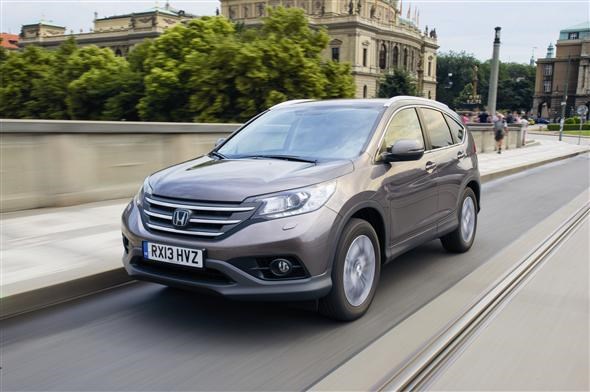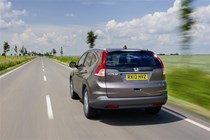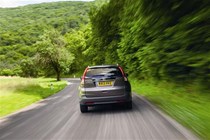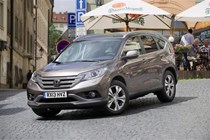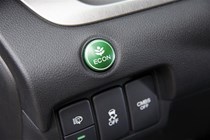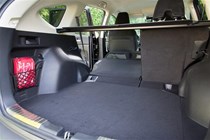Up until now, if you wanted a diesel-powered Honda CR-V there was only one option: a powerful 2.2-litre unit that offered excellent performance but comparatively high CO2 emissions.
From Autumn 2013, however, Honda’s ‘soft roader’ is also available with the company’s smaller and more efficient 1.6-litre i-DTEC diesel engine.
The same engine has already been serving under the bonnet of the Honda Civic hatchback since January 2013 and offers 118bhp and 300Nm of torque, which gives the CR-V enough grunt to make decent progress on the road and as a tow car.
Headline figure for the new engine is a CO2 output of 119g/km, which is by far the lowest of the CR-V range.
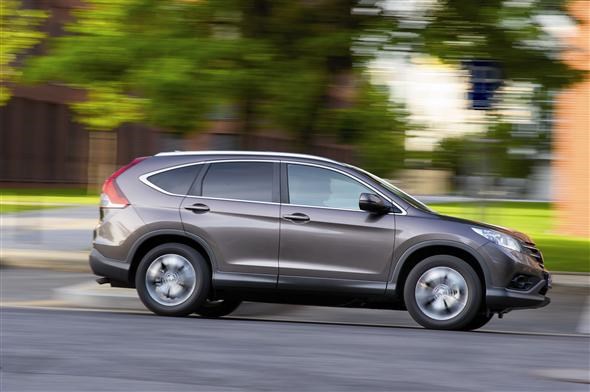
Honda hopes that breaking the 120g/km barrier will make the car an attractive option for fleet and company car drivers. Indeed, the sales forecast for the model suggests that 60% of cars sold will go to fleet buyers.
All CR-Vs with the 1.6 i-DTEC engine are front-wheel drive and equipped with a six-speed manual gearbox and stop-start system. There are no plans currently for an all-wheel drive or automatic version in the future.
That’s no bad thing, as on the tarmac it performs very well. There’s more than enough performance to cope with most driving scenarios and the engine’s lower weight (it’s 47kg lighter than the 2.2 diesel) means Honda’s engineers have been able to tweak the suspension settings to make the car a little more nimble.
There’s a welcome lack of body roll and the CR-V doesn’t lurch around as some 4×4-style vehicles have been known to. Overall it’s a stable, safe and generally well-balanced car that you’ll quickly feel comfortable with. The manual gearbox has a snappy shift action that’s a pleasure to use, too.

Honda says the changes to the springs and dampers have resulted in a marginally less comfortable ride than other versions of the CR-V but that they felt the trade-off was worthwhile for the benefits in agility. Over some of the rougher sections of our test route, however, the ride quality felt more than adequate and certainly not uncomfortable.
As well as the low CO2 figure, Honda claims average fuel consumption of nearly 63mpg which equates to a range of just over 800 miles from a full tank.
The 1.6 engine is available in three trim levels: S, SE and SR. Unlike other engines in the range there won’t be a plush EX version; Honda is keeping the highest equipment level set aside for the 2.2-litre diesel engine only.
We drove the CR-V in a European equivalent to SE trim, which means 17-inch alloy wheels, part-leather upholstery and parking sensors front and rear. Digital DAB radio is standard for all three trims and across the CR-V range as a whole.
Behind the wheel you’ll find the same comfortable and spacious but rather nondescript interior as the rest of the range. Apart from a few patches of scratchy plastic it feels of generally high quality and there’s a great deal of space for a five-seater car.
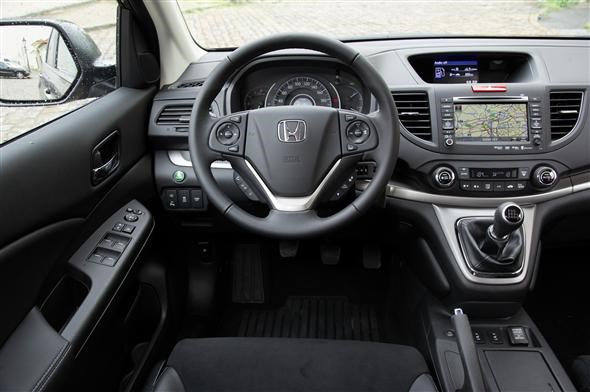
Bear in mind that if you go for the SR trim you’ll get larger 18-inch wheels which make the car look a bit more purposeful but increase the CO2 emissions above the 120g/km bracket, so fleet buyers should opt for the S or SE trims to benefit from lower tax rates.
Prices are yet to be officially confirmed, but Honda tells us we can expect them to start from around £23,000. That places the car neatly between the 2.0-litre petrol and 2.2-litre diesel models in the range.
While the CR-V is certainly not the most exciting car in the world, it’s extremely practical, easy to drive and now, with the smaller diesel engine, no longer hamstrung by comparatively high CO2 costs. Whether you’re a company car driver or a private buyer, it’s worth adding to your shortlist.
Read the full Honda CR-V review here.
Also consider:
The Tiguan is a very capable, if rather bland, competitor. A two-wheel drive 2.0-litre diesel BlueMotion Tiguan will average 53mpg and emit 139g/km of CO2.
Ford’s sharp-suited Kuga offers a polished driving experience and a spacious interior. Like the Tiguan, the 2WD 2.0-litre diesel Kuga averages 53mpg and emits 139g/km of CO2.
Also available in 2WD, the CX-5 can be had with Mazda’s efficient 2.2-litre diesel engine which averages 61mpg and emits an identical 119g/km of CO2 to the CR-V.



